
Do you have a question about the Mitsubishi Electric FR-E840-0016 and is the answer not in the manual?
| Brand | Mitsubishi Electric |
|---|---|
| Model | FR-E840-0016 |
| Category | Inverter |
| Language | English |
Details on how to identify the inverter model by checking the rating plate, covering voltage class, phase, capacity, and communication type.
Description of the components of the operation panel, including monitor, LEDs, keys, and USB connector for standard and Ethernet models.
Step-by-step guide for basic PU operation, including setting frequency, starting, and stopping the inverter.
Procedure for basic external operation, covering setting frequency via operation panel, switches, and analog signals.
Comprehensive list of inverter parameters, including function, Pr. number, name, setting range, and reference page.
Explanation of Vector control and Real sensorless vector control techniques, including equivalent circuits and advantages.
Guide on setting control methods (V/F, vector, sensorless) and control modes (speed, torque, position) using parameters.
Procedure for selecting Advanced magnetic flux vector control, including motor settings and auto tuning.
Instructions for initializing parameters for PM sensorless vector control and setting the PM motor.
Step-by-step guide for setting Real sensorless vector control for speed control, including wiring, parameters, and test operation.
Procedure for setting Vector control (speed control), covering wiring, motor settings, and test operation.
Instructions for setting PM sensorless vector control for speed control, including parameter configuration and test operation.
Guide to limiting the output torque to prevent overspeeding, covering parameter settings and analog input methods.
Explanation of gain adjustment for high-accuracy and fast-response control, including speed and torque control gain adjustments.
Methods to prevent motor overrunning due to excessive load torque or incorrect encoder settings, including speed deviation excess detection.
Explanation of torque control operation, including controlling output torque as commanded and preventing motor overspeeding.
Step-by-step guide for setting Real sensorless vector control for torque control, including wiring, parameters, and test operation.
Procedure for setting Vector control for torque control, covering wiring, motor settings, control method, and test operation.
Explanation of how to select the torque command source, including analog input, parameter setting, and communication.
Guide to limiting the output torque to prevent overspeeding, covering parameter settings and signal inputs.
Introduction to position control, explaining speed command calculation and simple positioning functions by point tables.
Step-by-step guide for setting Vector control for position control, including wiring, motor settings, and test operation.
Explanation of simple positioning using point tables, covering setting positioning parameters, auxiliary functions, and return to home position.
Instructions for adjusting position control gain parameters to achieve optimum performance and improve unfavorable conditions.
Explanation of speed detection filter settings for stabilizing speed detection and improving response.
Guide to adjusting current controller gains for d axis and q axis to improve trackability and reduce current fluctuation.
Explanation of reset input acceptance, disconnected PU detection, and PU stop function selections.
Guide to setting motor acceleration/deceleration time, including linear and S-pattern settings.
Guide to selecting the inverter operation mode (PU, External, Network, Combined) and setting command sources.
Explanation of selecting start and frequency command sources during communication operation via external signals or programs.
Explanation of electronic thermal O/L relay function for protecting the motor from overheating by setting current.
Explanation of retry function that allows inverter to reset and restart at protective function activation.
Description of stall prevention operation to monitor output current and change frequency to prevent inverter shutoff.
Description of overspeed detection function (E.OS) to prevent motor from accidental speeding over specified value.
Guide to selecting monitor items displayed on the operation panel or via communication.
Explanation of selecting analog input terminal specifications and switching between voltage/current input.
Guide to setting magnitude (slope) of output frequency in relation to torque setting signal and adjusting bias/gain.
Guide to selecting or changing input terminal functions for signals like STF, STR, JOG, MRS, and X10.
Guide to selecting the applied motor type and setting motor constants for optimal performance.
Explanation of offline auto tuning for optimal operation, including procedures and prerequisites.
Instructions for offline auto tuning for PM motors, including parameter settings and troubleshooting.
Explanation of brake sequence function for stopping motor with mechanical brake and preventing load slippage.
Details on PID control for process control applications like flow rate, air volume, or pressure.
Guide to adjusting braking torque and timing, and selecting zero speed control, servo lock, and magnetic flux decay.




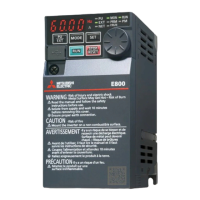


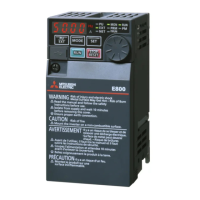
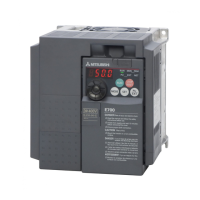
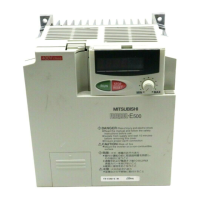

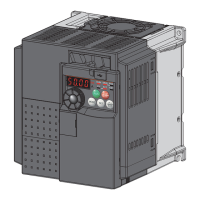
